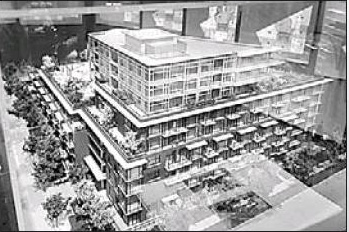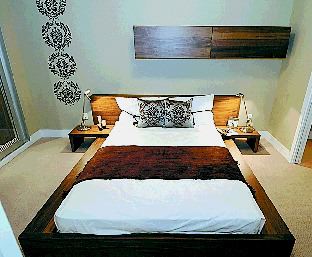Boomerangs ‘spend too much’
Sheila Brady
Province
Adult children are returning to their parents’ homes in unprecedented numbers, with rosy dreams of saving for their own first homes — yet few are socking away enough cash for an adequate down payment, according to a recent survey.
“These kids have to get a reality check,” says Cid Palacio, vice-president, BMO Bank of Montreal, which commissioned the poll of 1,205 people, conducted by Decima Research in six Canadian cities.
“They have unrealistic ambitions and will be chasing this rainbow of homeownership without a tangible or practical plan on how to get there.”
They may be playing too much and not saving enough, says the senior banker.
The survey found almost one in three Canadians between 21 and 34 had moved back home to save for their first house.
While “boomerang kids” often come home after university or between jobs, the survey discovered a high number of Canadians between 31 and 34 are still at home, putting money aside for their own residence.
According to the survey, Toronto, Halifax and Calgary posted the highest percentage of “stay-at-homes” over 30.
Not so surprisingly, they also have some of the highest home prices in the country, says Palacio.
Twenty-two per cent of this older group live with their parents in the suburbs surrounding Toronto and 17 per cent in Halifax and Calgary.
These stay-at-homes have an average income of $43,000 and they have been stashing about 12 per cent of their pre-tax income into home-savings funds for about 18 months.
They expect to save enough for a 25-per-cent down payment within 3.8 years, according to the findings.
No way, says Palacio. “They should be saving twice as much money or realize it will take them eight years, not four.”
Young Canadians living on their own have the same homeownership ambitions and are saving only two per cent less of their income, says Palacio.
Possibly, it’s about lifestyle, too many parties and not enough savings, or the stay-at-homes entered the work force with a lot of debt from school, she says.
Most important, these young Canadians need to get informed about the home market, look at prices and likely downgrade their dream to a smaller house.
They also need a financial plan, and with rising house prices, consider that they won’t be able to save 25 per cent of a house price for a down payment, she says.
Thirty per cent of these young buyers intend to use their First Time Home Buyers RRSP plan as a major source of funding and
60 per cent intend to rely
on their savings or investments.
The survey was conducted in March and based on 1,205 young Canadians living in Halifax, Montreal, Toronto, Winnipeg, Calgary and Vancouver.
The results are considered accurate to within 2.9 percentage points, 19 times out of 20.








